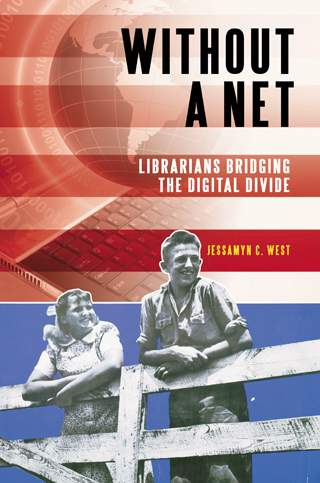The book has a fairly extensive list of web resources that I think people will find useful. The web addresses are all printed out which makes them not super useful for people online. Here is an amended list of the book's list of resources. This list is not intended to be comprehensive and by the time this is in print it may not even be accurate, but it's a carefully curated list of things that I think will be helpful to you most of which I use regularly in my work.
The small libraries I worked with in Vermont
Chelsea
http://www.chelseavt.org/
Randolph
http://kimballlibrary.org
Roxbury
http://roxburyfreelibrary.wordpress.com/
Sharon
http://www.sharonvt.net/
Tunbridge
http://tunbridgelibrary.org
Washington
http://www.librarian.net/calef/
Williamstown
http://ainsworthpubliclibrary.wordpress.com/
REPORTS
IRS Advancing E-file Study
http://www.irs.gov/uac/IRS-Advancing-E-file-Study-Key-Messages
Falling Through The Net: Toward Digital Inclusion: A Report on Americans' Access to Technology Tools (2000, pdf)
http://search.ntia.doc.gov/pdf/fttn00.pdf
Libraries Connect Communities: Public Library Funding & Technology Access Study (2008-2009)
http://ala.org/plinternetfunding
Broadband in the Mississippi Delta: A 21st Century Racial Justice issue by the Center for Social Inclusion (2010)
http://www.centerforsocialinclusion.org/publications/?url=broadband...
FCC Broadband Study (2009, pdf)
http://hraunfoss.fcc.gov/edocs_public/attachmatch/DOC-296442A1.pdf
Pew internet Life Home Broadband Survey (2009, 2008 & 2005)
http://www.pewinternet.org/Reports/2009/10-Home-Broadband...
http://www.pewinternet.org/Reports/2008/Home-Broadband-2008.aspx
http://www.pewinternet.org/Reports/2005/Digital-Divisions.aspx
U.S. IMPACT Public Library Study
http://cis.washington.edu/usimpact/us-public-library-study.html
Connecting America: The National Broadband Plan (2010)
http://www.broadband.gov/download-plan/
Scaling the Digital Divide: Home Computer Technology and Student Achievements (pdf)
http://sites.google.com/site/jacobvigdor/digdivide072908.pdf
IMLS Report - Public Libraries in the United States (2007)
http://harvester.census.gov/imls/pubs/pls/pub_detail.asp?id=122
New York City Broadband Landscape and Recommendations (2008, pdf)
file not available online, click for local cache
Closing the Broadband Divide (2007)
http://www.pewinternet.org/Reports/2007/Closing-the-Broadband-Divide.aspx
The Millennials: Confident. Connected. Open to Change (pdf)
http://pewsocialtrends.org/assets/pdf/millennials-confident-connected-open-to-change.pdf
State of America's Libraries Report (2009 & 2010)
http://www.ala.org/news/mediapresscenter/americaslibraries/soal_archive
http://www.ala.org/ala/newspresscenter/mediapresscenter/presskits/2009stateofamericaslibraries/2009statehome.cfm
ACCESSIBILITY
Introduction to Web Accessibility
http://www.webaim.org/intro/
Designing More Usable Web Sites
http://trace.wisc.edu/world/web/
The Center on Human Policy
http://thechp.syr.edu/
Universal Access: Making Library Resources Accessible to People with Disabilities
http://www.washington.edu/doit/UA/PRESENT/libres.html
ASCLA "Library Accessibility -What You Need to Know" tipsheets
http://www.ala.org/ala/mgrps/divs/ascla/asclaprotools/accessibilitytipsheets/
Check your site for accessibility
http://www.accesskeys.org/
Accessibility at Microsoft
http://www.microsoft.com/ENABLE/
Accessibility at Apple
http://www.apple.com/accessibility/
Ubuntu Accessibility
https://wiki.ubuntu.com/Accessibility
AbilityHub
http://www.abilityhub.com/
Usability.gov's Research-Based Web Design & Usability Guidelines (pdf)
http://usability.gov/guidelines/guidelines_book.pdf
Web Content Accessibility Guidelines
http://www.w3.org/TR/WCAG10/
Keyboard shortcuts for Windows
http://support.microsoft.com/kb/126449
Mac OSX keyboard shortcuts
http://support.apple.com/kb/ht1343
ADVOCACY
Internet for Everyone
http://www.internetforeveryone.org/
ALA's Poor People's Policy
Click here and spare your eyes this ghastly URL
Greening Your Library
http://greeningyourlibrary.wordpress.com/
DESIGN & USABILITY
Quick & Dirty User Testing
http://www.alistapart.com/articles/quick-and-dirty-remote-user-testing/
Library Usability Testing on the Cheap
http://www.newrambler.net/lisdom/188
UseIt.com - Jakob Nielsen on Usability and Web Design
http://www.useit.com/
INSTRUCTION
How to help someone use a computer
http://polaris.gseis.ucla.edu/pagre/how-to-help.html
Tips for Teaching Older Adults to use Computers (pdf)
http://skyways.lib.ks.us/tricon/2005/handouts/tips_for_teaching.pdf
ACRL Multilingual Instruction Glossary
http://icanhaz.com/jargon
Online Dictionary for Library and Information Science
http://lu.com/odlis/
Wikimedia Commons
http://commons.wikimedia.org/
Library Success Wiki
http://www.libsuccess.org/
How to use the web for topic search tutorials
http://www.intute.ac.uk/
INTERNET & BROWSER
I want a Firefox extension to...
http://www.econsultant.com/i-want-firefox-extension/
Firefox Help
http://support.mozilla.com/
Google Chrome Help
http://www.google.com/support/chrome/
Internet Explorer Help
http://www.microsoft.com/windows/internet-explorer/support/help.aspx
Safari Help
http://www.apple.com/support/safari/
OPEN SOURCE
SquirrelMail
http://squirrelmail.org/
Open Source Alternatives
http://www.osalt.com/
Free and Open Source Software Directory
http://www.webi.org/
Free Software Foundation
http://www.fsf.org/
Open Source Initiative
http://www.opensource.org/
POLICIES
Library Social Software Policies
http://www.web2learning.net/archives/1250
Academic Library Privacy Statements
Another bad ALA URL here.
VIRUS/UPDATES/SAFETY
Malwarebytes
http://www.malwarebytes.org/
AVG
http://www.avg.com/
Browser Security Comparison
http://www.webdevout.net/browser-security
Hijack This
http://free.antivirus.com/hijackthis/
HijackThis logfile analyzer
http://www.hijackthis.de/
Snopes Rumor Debunking
http://www.snopes.com/computer/computer.asp
Wired Safety
http://www.wiredsafety.org/
APPENDIX
The appendix materials are some slightly edited reprints of material freely available online. In the interests of space, I'll link to them rather than copy/pasting them. Some materials I wanted to include are copyrighted and I don't have permission to reproduce them here, notably Phil Agre's
How to help someone use a computer, which could almost be a three page pamphlet replacement for this entire book. The other documents are
- Aspects of Computer Literacy list from Wikipedia
- Usability.govs Research-Based Web Design & Usability Guidelines
Also listed in the webliography. This is a nearly 300 page book, a free download. It was created, in the authors' own words "To provide quantified, peer-reviewed Web site design guidelines." All the guidelines are presented with scores for "relative importance" (i.e. how important the issue is related to other usability issues, with the awareness that often tough choices much be made) and "strength of evidence" which is how supported by research the guidelines are. Since the document is a government publication, it is in the public domain. I encourage people to download and read the entire publication or just keep it handy.
- Trust-Inducing Features of Graphic Design
Also on Usability.gov is this article by Susanne Furman, a usability engineer with the U.S. Department of Health & Human Services about how to design web content to induce trust. This is of large concern to DHHS and it should also be something that we as librarians think about. Furman cites an article in Computers and Human Behavior by Y.D. Yang and H.H. Emurian where they outline a framework for what they call "trust-inducing features." I think these are important considerations to keep in mind when designing digital content for libraries. Read these and think of your library's website, or think about the websites of vendors who you do business with. How trust-inducing is the digital content?
 About the Book
About the Book





